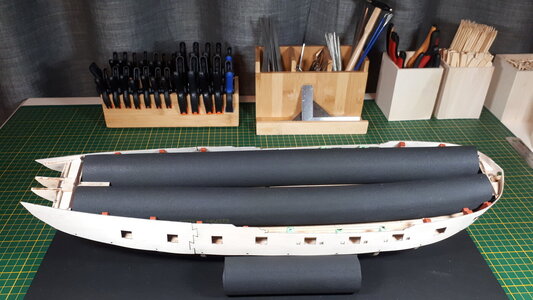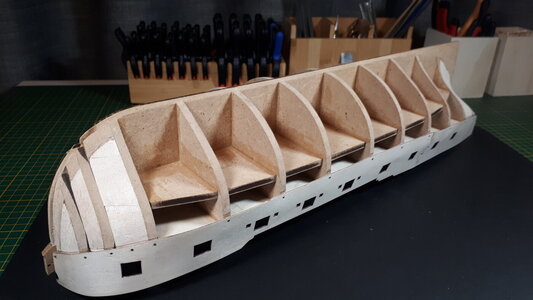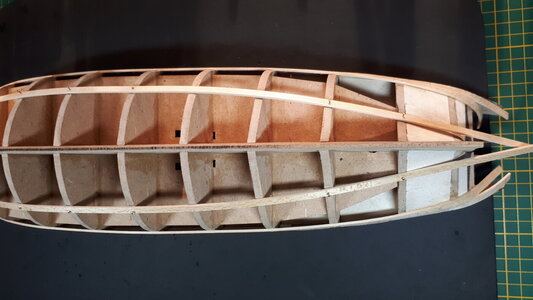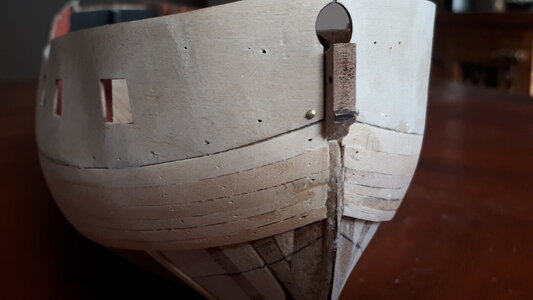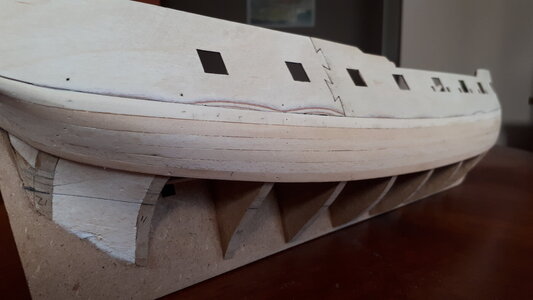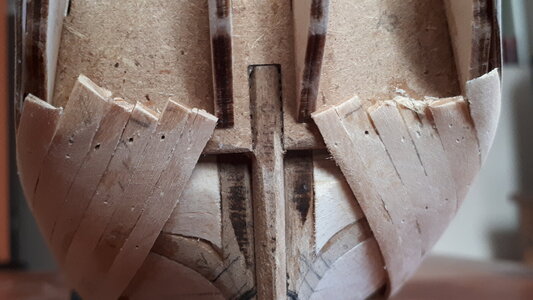Hi Mark. I was watching your build ‘in the background’. But what I see what you did with this big peaces of plywood: Well done!I gave the gun port patterns a day or so to dry completely and was relieved to see them maintain their shape after removing them from the hull. However, a small kink at the foremost bulkhead had me soaking them a second time to correct the error. This seemed to do the trick, and happily the second dunking did not incur any noticable damage to the wood
View attachment 316640
The gunport patterns were then glued to the hull in much the same way as they were first fitted for shape, using clamps and pins to hold everything in place. The temporary bowsprit worked well as a termination point for the ends of the bulwark strips.
View attachment 316641
I remembered just in time to wrap the temporary bulkhead extensions with tape before glueing down the gun port patterns. These extensions will be removed later on and it wouldn't help much if they were stuck fast to the inner side of the bulwarks.
View attachment 316642
Symmetry was everything for this exercise. The litmus test was to ensure, for both port and starboard sides, that the top edges of the bulwarks lined up with the tops of the bulkhead frames, the gun port openings were equidistant from the surface of the gun deck, and the forward ends of the bulwarks met at the prow with some degree of uniformity.
View attachment 316643
The zig-zag join of the gun port pattern drew a fair bit of my attention. It is situated just aft of the ninth bulkhead frame for no apparent reason with nothing but open air for support. At first I reinforced the entire join on the inside with a strip of ply but soon realised that this would likely interfere with the inner bulwark planking later on. Removing it did not seem to make any real difference to the strength of the connection, but I did leave the part of the strip below the deck in place as some measure of reinforcement, and to facilitate the slight lateral bend of the lower bulwark at that point.
View attachment 316644
And that's the gun port patterns fitted. I don't think I got it entirely right, but I don't think I got it entirely wrong either. The top edges of the patterns are not all exactly flush with the bulkhead frames, and I am yet to learn whether the wavy lateral nature of the bulwarks will sit well with the first layer of planking. Those are challenges for another day though
View attachment 316645
Stretching it over the whole length of the model with curves in 2 direction: hat off!
Regards, Peter






